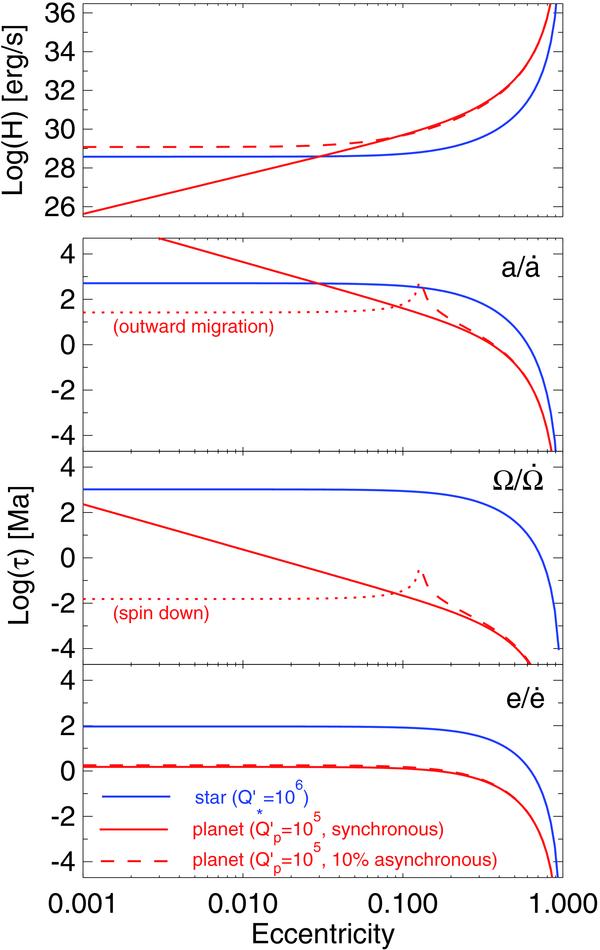Fig. 14

Heating rates and dynamical timescales for the orbital evolution of the CoRoT-2
system as a function of the orbital eccentricity. The star and planet are assumed to
have their present mass and orbital period, and tidal dissipation factors
 ,
,
 . The blue curves
refer to the star, the red curves to the planet. The planet is assumed to be either
synchronously rotating (spin period=orbital period) (plain lines), or to rotate 10%
faster than synchronous rotation (dashed lines). From top to
bottom, the panels show various important quantities:
a) heating rates due to tidal dissipation in the
planet and in the star; b) migration timescale due to
the star and the planet. Migration is inward except in the asynchronous case due to
the planet’s spin down for eccentricities smaller than ~0.12;
c) spin-up timescale: the star is spun up by the
planet in all cases. The planet is generally spun up, except in the asynchronous
case (see text); d) Circularisation timescale: the
evolution towards a circular orbit is due to both stellar and planetary tides.
. The blue curves
refer to the star, the red curves to the planet. The planet is assumed to be either
synchronously rotating (spin period=orbital period) (plain lines), or to rotate 10%
faster than synchronous rotation (dashed lines). From top to
bottom, the panels show various important quantities:
a) heating rates due to tidal dissipation in the
planet and in the star; b) migration timescale due to
the star and the planet. Migration is inward except in the asynchronous case due to
the planet’s spin down for eccentricities smaller than ~0.12;
c) spin-up timescale: the star is spun up by the
planet in all cases. The planet is generally spun up, except in the asynchronous
case (see text); d) Circularisation timescale: the
evolution towards a circular orbit is due to both stellar and planetary tides.
Current usage metrics show cumulative count of Article Views (full-text article views including HTML views, PDF and ePub downloads, according to the available data) and Abstracts Views on Vision4Press platform.
Data correspond to usage on the plateform after 2015. The current usage metrics is available 48-96 hours after online publication and is updated daily on week days.
Initial download of the metrics may take a while.


